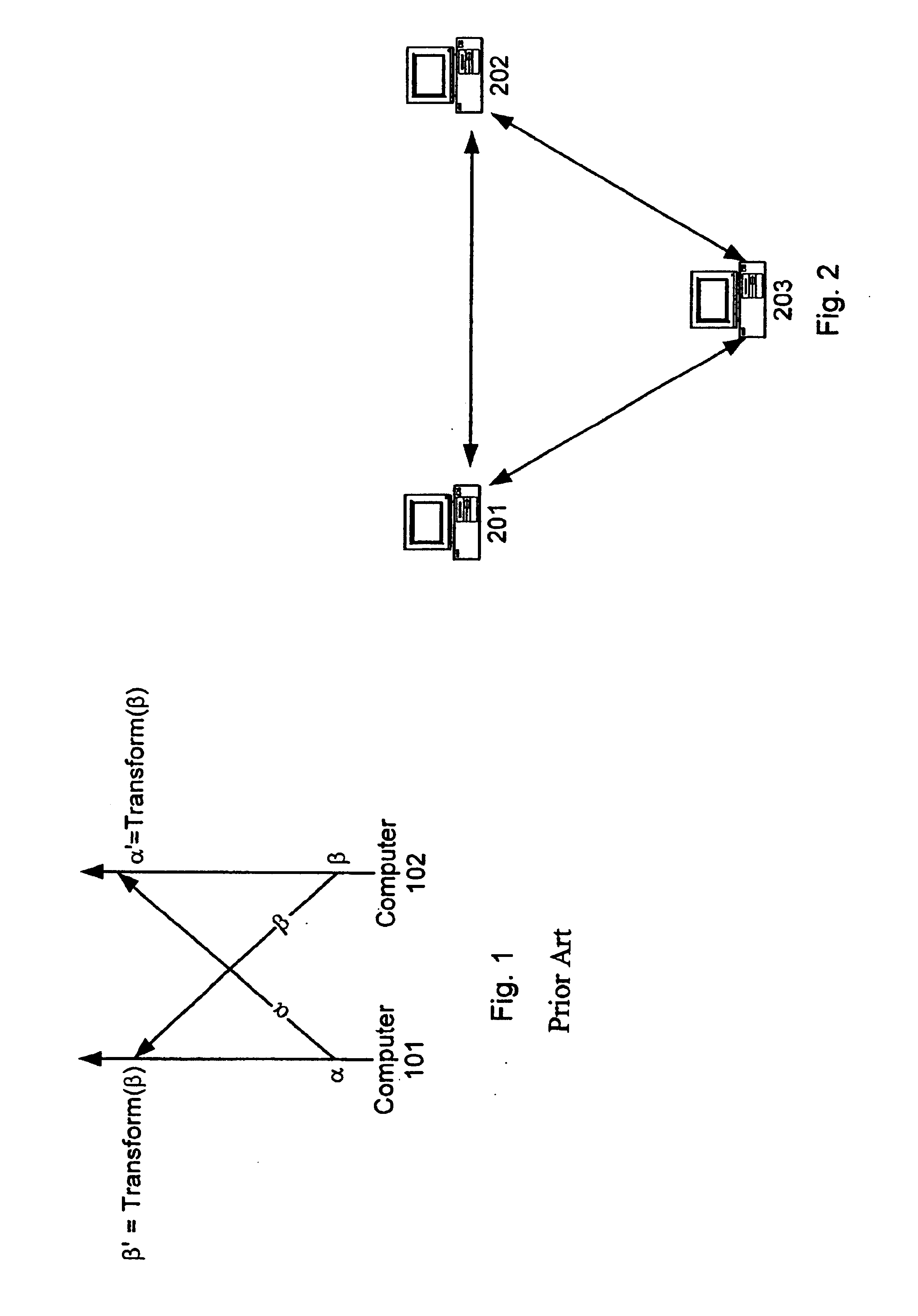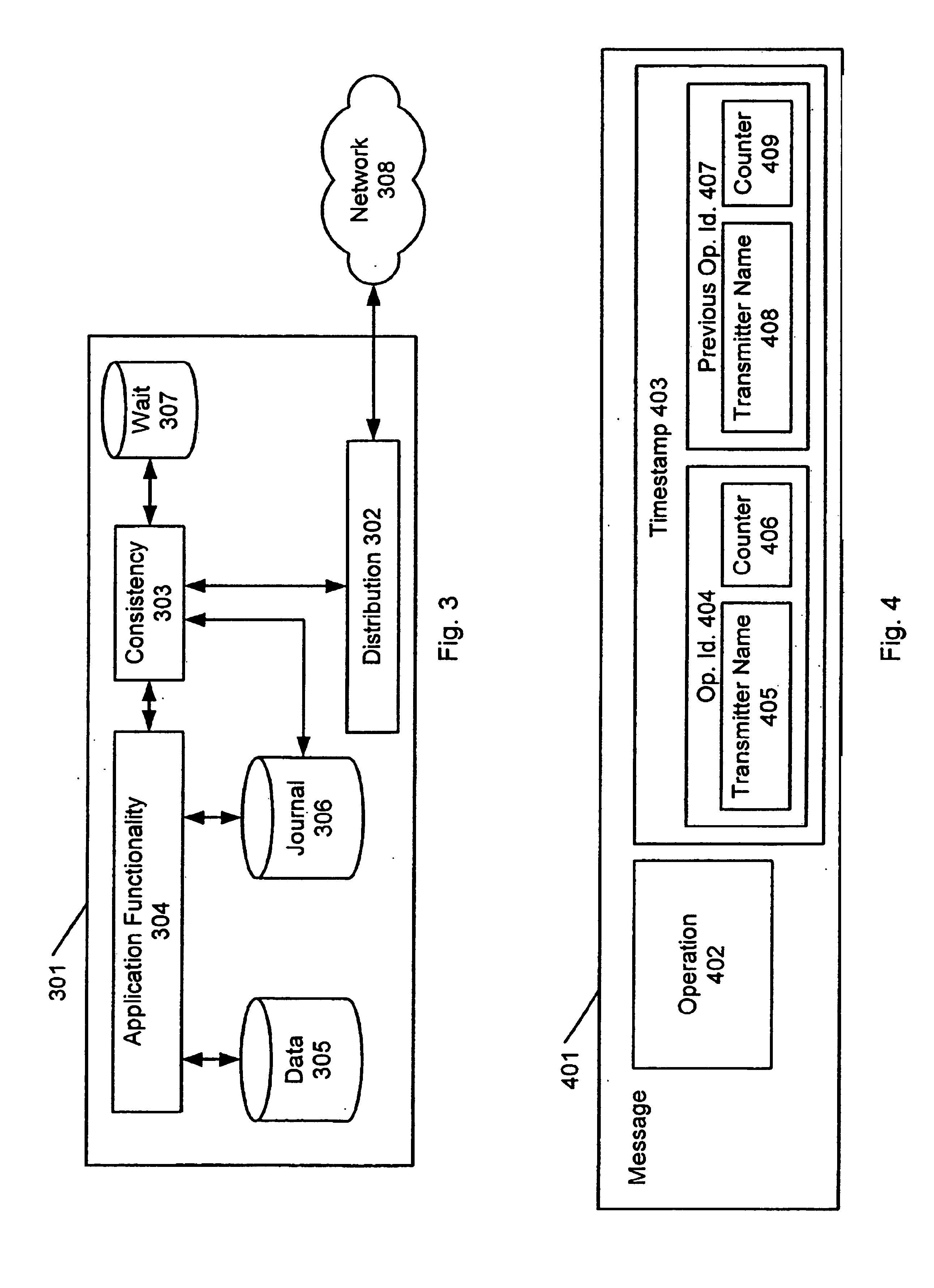Conflict resolution for collaborative work system
a collaborative work and conflict resolution technology, applied in transmission systems, instruments, transmission systems, etc., can solve problems such as temporal errors, different manipulations of shared data objects, and errors, also referred to as ordering or sequencing errors
- Summary
- Abstract
- Description
- Claims
- Application Information
AI Technical Summary
Benefits of technology
Problems solved by technology
Method used
Image
Examples
Embodiment Construction
[0014]FIG. 2 shows a group of computers 201-203 that are connected over a network in peer-to-peer fashion. The computers 201-203 execute a groupware application allowing the users at collaboratively modify data (the “shared data object”). FIG. 3 shows the architecture of the groupware application. The application 301 includes functionality 304 to operate on a shared data object 305 that is replicated each of the computers 201-203. The functionality 304 can be, e.g., computer aided design functionality and the shared data object 305 may represent a model of a three-dimensional object. The application 301 also includes a message distribution component 302 that can broadcast (i.e., send) messages to each peer 201-203 and can receive messages over the network 308. Messages distributed by the component 302 can detail operations executed by the application 301 to manipulate the data 305. For example, a message can be broadcast by computer 201 to computers 202-203 instructing computers 202...
PUM
 Login to View More
Login to View More Abstract
Description
Claims
Application Information
 Login to View More
Login to View More - R&D
- Intellectual Property
- Life Sciences
- Materials
- Tech Scout
- Unparalleled Data Quality
- Higher Quality Content
- 60% Fewer Hallucinations
Browse by: Latest US Patents, China's latest patents, Technical Efficacy Thesaurus, Application Domain, Technology Topic, Popular Technical Reports.
© 2025 PatSnap. All rights reserved.Legal|Privacy policy|Modern Slavery Act Transparency Statement|Sitemap|About US| Contact US: help@patsnap.com



